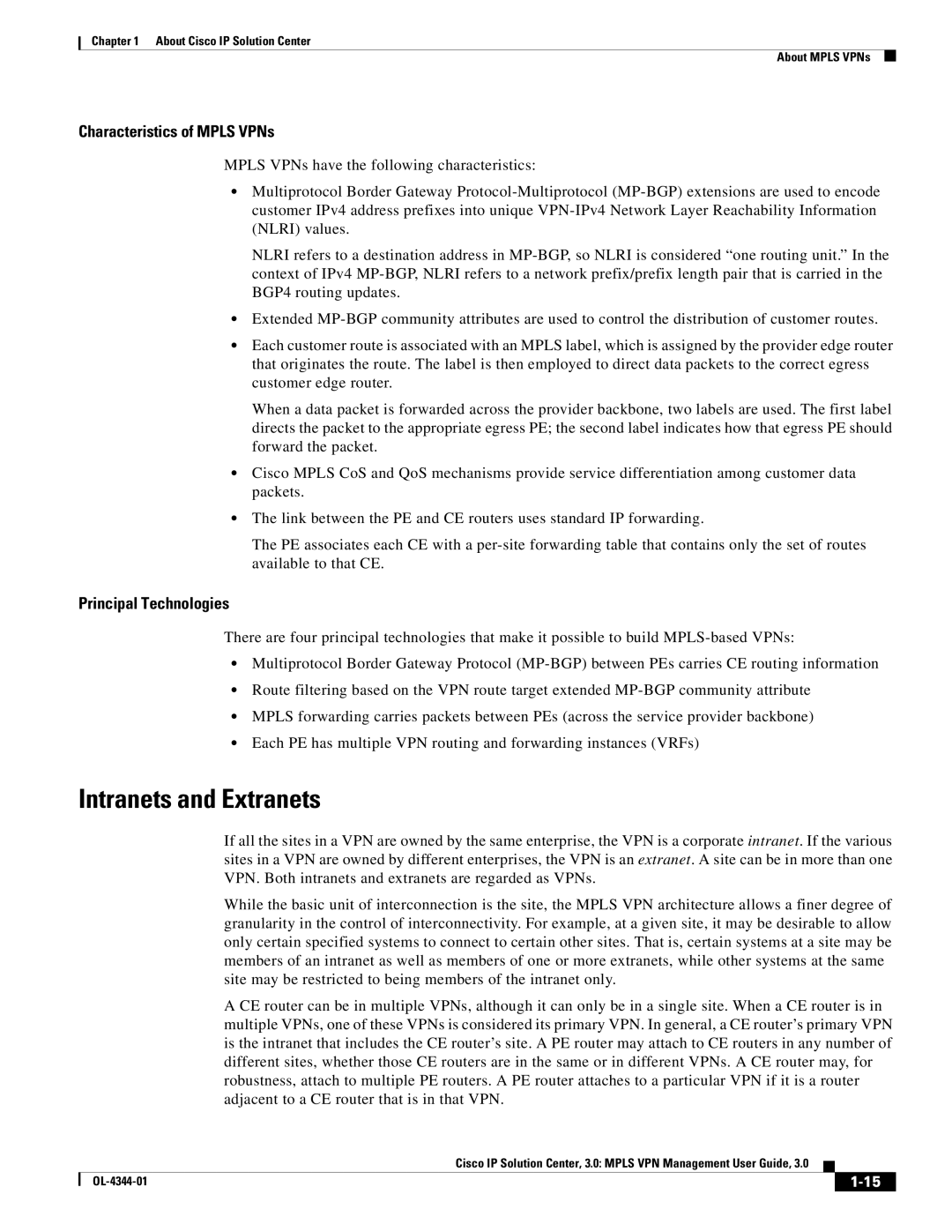
Chapter 1 About Cisco IP Solution Center
About MPLS VPNs
Characteristics of MPLS VPNs
MPLS VPNs have the following characteristics:
•Multiprotocol Border Gateway
NLRI refers to a destination address in
•Extended
•Each customer route is associated with an MPLS label, which is assigned by the provider edge router that originates the route. The label is then employed to direct data packets to the correct egress customer edge router.
When a data packet is forwarded across the provider backbone, two labels are used. The first label directs the packet to the appropriate egress PE; the second label indicates how that egress PE should forward the packet.
•Cisco MPLS CoS and QoS mechanisms provide service differentiation among customer data packets.
•The link between the PE and CE routers uses standard IP forwarding.
The PE associates each CE with a
Principal Technologies
There are four principal technologies that make it possible to build
•Multiprotocol Border Gateway Protocol
•Route filtering based on the VPN route target extended
•MPLS forwarding carries packets between PEs (across the service provider backbone)
•Each PE has multiple VPN routing and forwarding instances (VRFs)
Intranets and Extranets
If all the sites in a VPN are owned by the same enterprise, the VPN is a corporate intranet. If the various sites in a VPN are owned by different enterprises, the VPN is an extranet. A site can be in more than one VPN. Both intranets and extranets are regarded as VPNs.
While the basic unit of interconnection is the site, the MPLS VPN architecture allows a finer degree of granularity in the control of interconnectivity. For example, at a given site, it may be desirable to allow only certain specified systems to connect to certain other sites. That is, certain systems at a site may be members of an intranet as well as members of one or more extranets, while other systems at the same site may be restricted to being members of the intranet only.
A CE router can be in multiple VPNs, although it can only be in a single site. When a CE router is in multiple VPNs, one of these VPNs is considered its primary VPN. In general, a CE router’s primary VPN is the intranet that includes the CE router’s site. A PE router may attach to CE routers in any number of different sites, whether those CE routers are in the same or in different VPNs. A CE router may, for robustness, attach to multiple PE routers. A PE router attaches to a particular VPN if it is a router adjacent to a CE router that is in that VPN.
Cisco IP Solution Center, 3.0: MPLS VPN Management User Guide, 3.0
|
| ||
|
|
